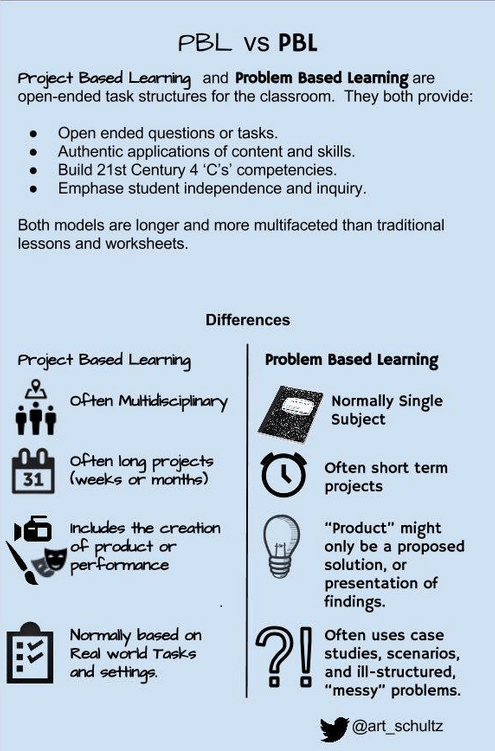Problem-based learning (PBL) is a student-centered approach in which students learn about a subject by working in groups to solve an open-ended problem. This problem is what drives the motivation and the learning. (
https://teaching.cornell.edu/teaching-resources/engaging-students/problem-based-learning )
The difference between PBL’s
Problem-based learning typically follow prescribed steps:
- Presentation of an “ill-structured” (open-ended, “messy”) problem
- Problem definition or formulation (the problem statement)
- Generation of a “knowledge inventory” (a list of “what we know about the problem” and “what we need to know”)
- Generation of possible solutions
- Formulation of learning issues for self-directed and coached learning
- Sharing of findings and solutions
If you’re a project-BL teacher, this probably looks pretty familiar, even though the process goes by different names. Other than the framing and the more formalized steps in problem-BL, there’s really not much conceptual difference between the two PBLs — it’s more a question of style and scope:
John Larmer (
https://www.edutopia.org/blog/pbl-vs-pbl-vs-xbl-john-larmer )
